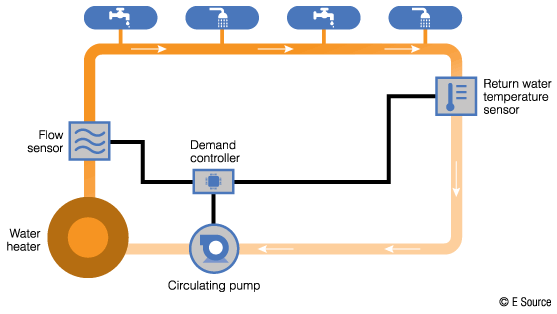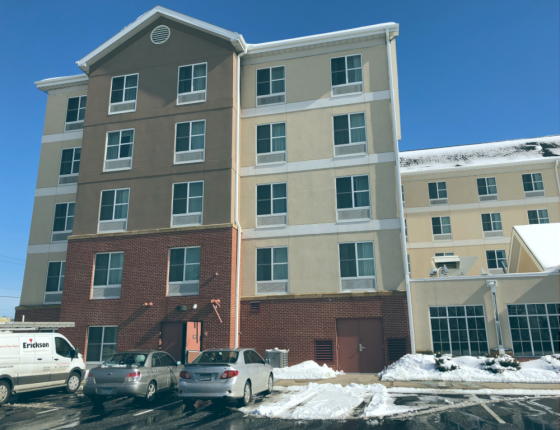Aquastat and time clock recirculation loop controls are used to reduce pumping and heating costs, but these controls work on a pre-set schedule and can delay hot water access during low use periods. This can be a particular concern in the commercial hospitality sector, where hot water usage patterns are highly variable, leaving the owner with little choice than to bypass time clock based controls so that hot water is always immediately available to satisfy their customers.

Newer systems use more sophisticated controls to improve response time. They register both temperature and demand so that the controller activates recirculation when both the return water has dropped below a prescribed temperature, and when hot water demand is sensed. Demand controls can quickly deliver hot water during low use periods.
Project process
Researchers assessed the effectiveness of new demand control systems in hospitality and commercial buildings. The first project phase, now being completed, will characterize existing systems. A nonintrusive data acquisition system will measure the recirculation pump runtimes, electricity use, and loop water temperatures at ten to fifteen buildings. Short term monitoring will evaluate the proportion of buildings on continuous loop operation, identify specific issues, and characterize the pumping patterns in centralized hot water systems in different building types.
In the second phase, the project team installed demand control systems at six hospitality and commercial buildings in Minnesota. System operation will rotate on a weekly basis between the new demand-based system and the baseline existing system, with detailed monitoring over the course of 10-12 months. Results will be used to determine the energy savings, estimated payback period, and percentage reduction in pump run time and hot water delivery time during low use periods.
Final Report
Researcher setting up wires in the boiler room so we can track data for the project.
Example of how we track data for the projects.
CEE partners with electricians to help install equipment.
Project Summary
Objective
Determine energy savings, estimated payback, and owner satisfaction with new hot water recirculation demand systems.
Scope
Installed systems at six sites and test at four hospitality and commercial buildings.
Non-energy benefits
- Reduced pump operation means less wear-and-tear on the water heating and distribution system, which will improve its longevity.
- Demand control systems provide a significant improvement to hot water delivery times when compared to time-clock recirculation loop controls.
Additional Project Resources
